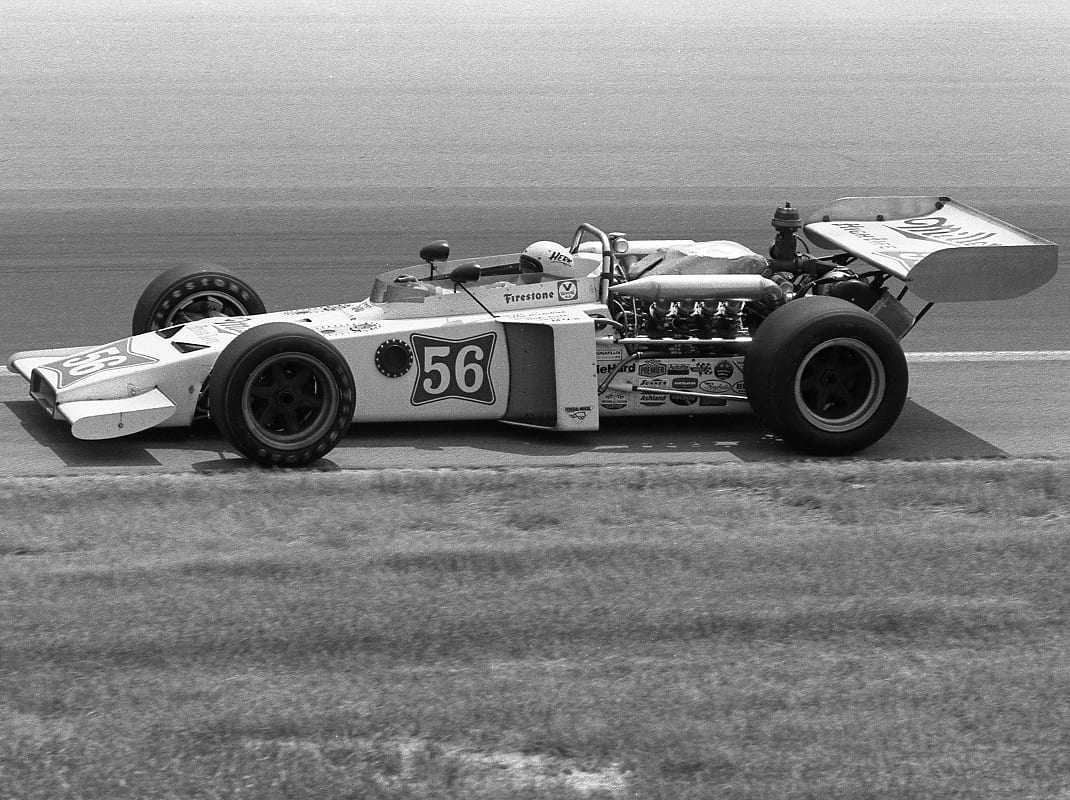Johnny Thomson was on a roll in 1959. He’d won the pole at Indianapolis while setting a one-lap record. He led 39 laps during the Indianapolis 500 and finished third.
He won at Milwaukee and was contending for the national championship until a serious accident during a USAC sprint car race at Pennsylvania’s Williams Grove Speedway forced him out for the remainder of the season.
His championship car — the Racing Associates Special owned by Art Lanthrop and D. Coleman Glover — was one of the best on the circuit. Typical of that era, no sooner had the word got out that Thomson was hurt, than Lanthrop’s phone lit up with calls from drivers clamoring for the ride.
Among them was promising sprint car newcomer Jim Hurtubise. Herk, as he would come to be known, was one of the hottest sprint car drivers in the nation. Running with IMCA he had a string of six wins, five seconds and three thirds and was leading the IMCA points.
“Everyone else was calling, so I thought, ‘Why not? What’ve I got to lose?’” recalled Herk.
Nothing as it turned out.
Lanthrop picked the unproven, impetuous, aggressive Hurtubise over a group of USAC regulars. The move took many aback and complaints poured into the USAC office.
USAC was renowned for being tough on new drivers from rival sanctioning bodies like IMCA, but it was a surprise when after hot laps for the Hoosier Hundred officials deemed it necessary to stage five-lap test runs for Hurtubise and five other newcomers.

Most veteran observers agreed it was solely a face-saving gesture on USAC’s part after receiving so much criticism for allowing the throttle-to-the-floor Hurtubise to run with them.
No worries for the jovial, easygoing Herk. He breezed through the test, qualified 13th and was running as high as seventh before spinning out on lap 56. But Lanthrop was pleased with Herk’s performance and signed him for the remaining championship races.
During the next race in Trenton, N.J., Hurtubise’s first on a large pavement track, he finished seventh. At Phoenix he missed the cut. Not unusual in those days of 30 or more cars vying for 18 starting spots on dirt tracks that often changed drastically during the course of qualifying.
Sacramento followed Phoenix and it was the last championship race of 1959. Thirty-six cars were entered for the Oct. 25 event. Hurtubise qualified 10th and at the green flag pushed the bright-pink Racing Associates car toward the front.
By lap 20, he was already fourth. But from there it got tougher. Just ahead of him, Eddie Sachs was leading and fighting to hold off two-time national champion and dirt track maestro Tony Bettenhausen. Wayne Weiler, who had earned the pole, was running third.
However, Hurtubise didn’t let those racing luminaries intimidate him. He got around Weiler quickly, battled with Bettenhausen for several laps and then passed him.
Up ahead, Sachs was still leading but his mechanic, Wally Meskowski, was desperately signaling him to slow down. The car had gotten hot in practice and Meskowski was concerned the engine wouldn’t last. But with Hurtubise pressing him, Sachs ignored Meskowski. Sure enough, within a few laps smoke rolled out of the car as its Offy engine blew. The unheralded Hurtubise was in first place.
With the lead in hand, Herk’s toughest competitor became the track. Cavernous holes and gully-like ruts formed. It was so rough that tough Bill Homier had to be relieved by A.J. Foyt, who’d missed the qualifying cut. Another steely racer, Shorty Templeman, was so beaten by the rough track that he had to be lifted from his car after the race.
Seasoned on IMCA’s dusty, rutty fairground tracks, Herk tenaciously wrestled his car around the holes he could avoid, danced over the ones he couldn’t and kept charging.
As expected, the crafty Bettenhausen made a late move for the lead, but Hurtubise expertly held him off and won the race.
It was a historic moment. It was the last championship car race of the 1950s and it was Herk’s first championship car victory. More importantly, Hurtubise’s victory signaled a changing of the guard in championship racing.
As the 1950s rolled into the ’60s, Hurtubise, Foyt and Parnelli Jones, who was at Sacramento watching his buddy take the victory, would rise to the top of American racing. Their accomplishments left a legacy that’s still celebrated today.
